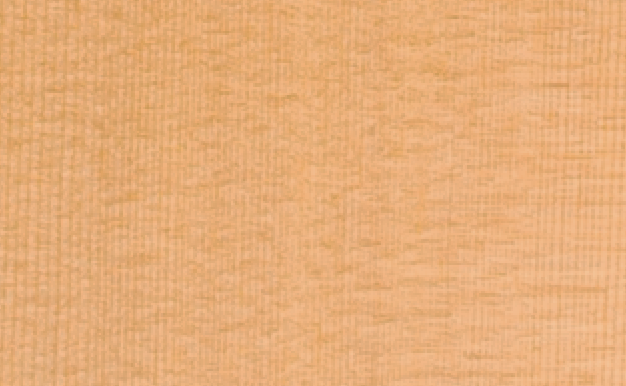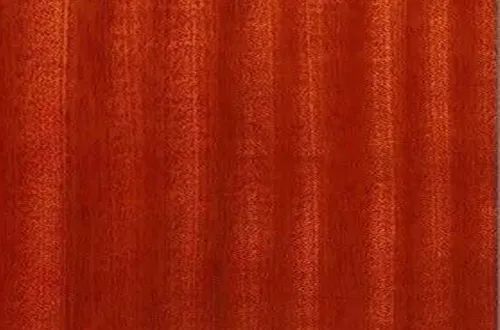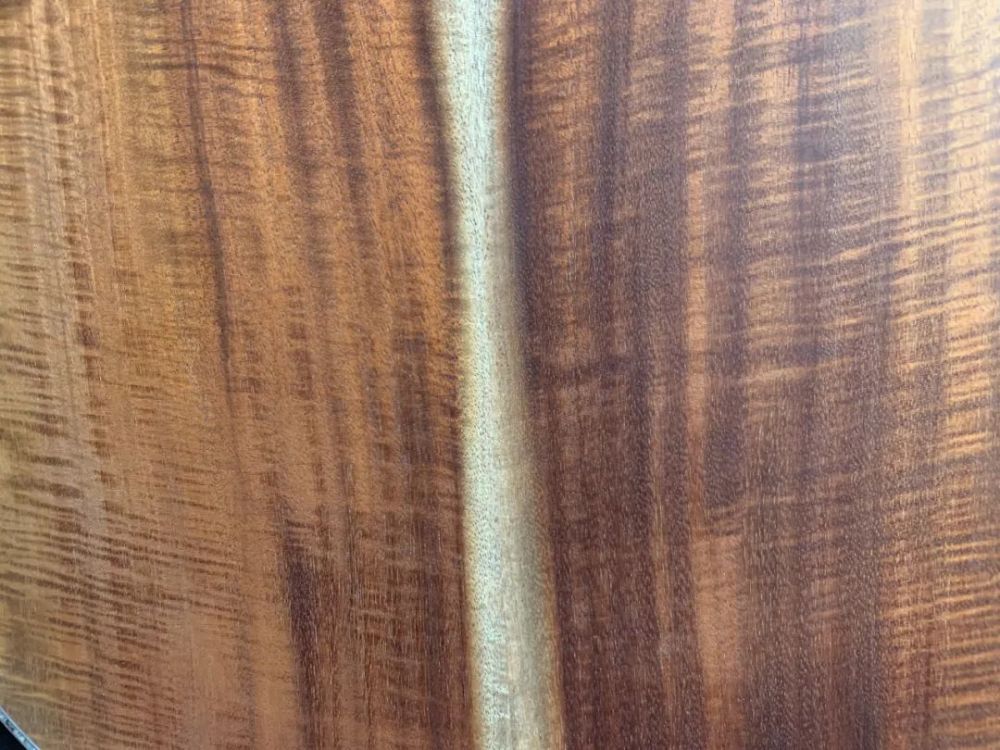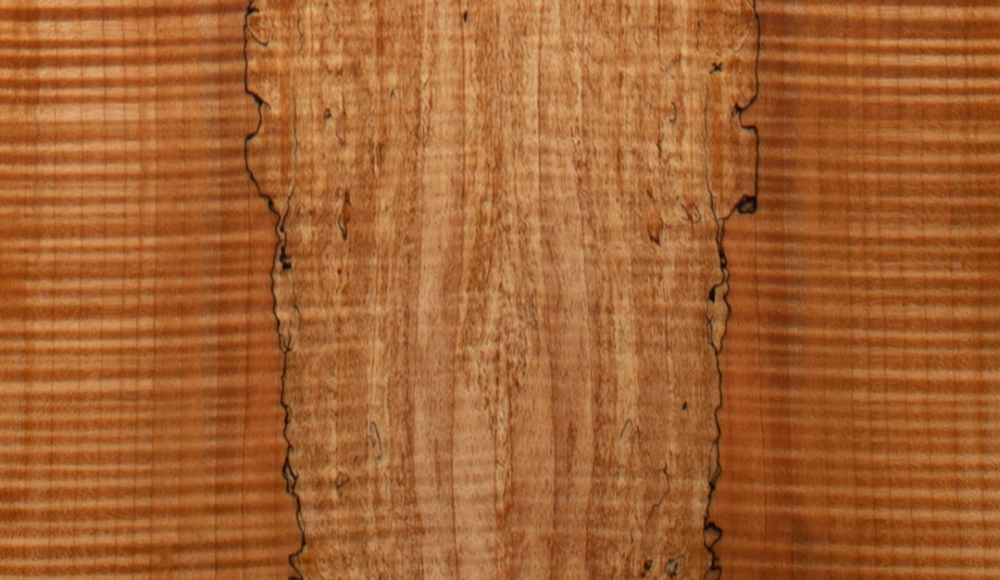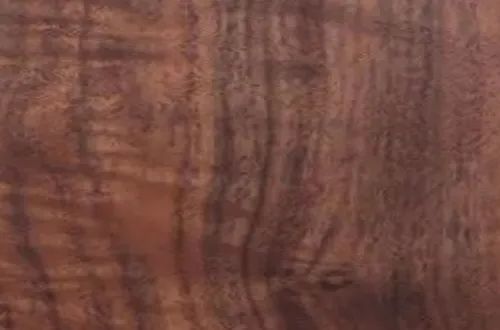Introduction to wood commonly used in guitar making
The tone of the guitar is closely related to the choice of wood, and the difference between wood is as mysterious as the difference between people before. Even if it is wood from the same tree, the wood sounds produced by different cutting methods in different locations are not the same. Many students often ignore the factor of wood when choosing a guitar, so that they have doubts that the tone of their guitar is different from that of others.
Wood growth and environment, genes, tree age, texture and various force majeure factors will affect the tone of a piece of wood. In addition, different production processes have different response effects to the guitar. The tone of a piece of wood is good or bad, and any evaluation of the difference between various woods has more or less personal subjective colors. Before you find your ideal guitar, you need to try out and listen to as many guitar sounds made by different woods, so that you have your own views on wood.
The introduction of wood in this article is for reference only~
1. Commonly used wood for guitar panels
The panel is the most important element that affects the sound of the guitar. When the strings vibrate, they are transmitted to the panel through the bridge. After the panel vibrates, the air in the guitar box also vibrates and amplifies the sound. The panel can affect the response of the guitar, the speed and sustain of the strings, as well as the strength and quality of each tone. Most luthiers believe that the choice of panel wood is the primary factor in determining the tone of a guitar.
1. Spruce
Spruce is a light-colored wood with excellent resonance performance, wide dynamic range, smooth and transparent sound, and has a good performance with any back and side panels.
Sitka/North American spruce (Sitka Spruce)
North American spruce has the characteristics of compact texture, hard texture and relatively lightness. It has a wide dynamic range, which is especially suitable for powerful strumming. At the same time, the response of the fingerstyle is also very good, even with a light touch, it can produce a subtle sound, and it can provide an ideal vibration on stringed instruments of any size and any style. It mainly grows in northwestern Canada and Alaska.
Engelmann Spruce
Originating in the western regions of the United States and Canada, its density is closer to that of red pine, and its texture is lighter. This characteristic makes its resonance and sound effect louder. Its panel is relatively white, and has a good performance in terms of anti-oxidation, even if it is used for a long time, it can maintain a white appearance. It is often used instead of North American spruce. Ingeman spruce is lighter and less rigid than North American spruce, but has stronger overtones and weaker pitch. The dynamic headroom of the panel is lower than North American spruce, and the sound will be somewhat damaged when played loudly. For those musicians who like to play soft music with complex sounds, it is a choice. (CCW custom guitar is optional)
European Spruce
The wood of European spruce is relatively fragile. If it is bent a lot, it will be easier to break. However, because of this characteristic, the panel produced by it will produce a very mellow overtone, just like its own The same as natural reverberation. In addition, its panel is very white, but with long-term use, it will gradually age naturally, showing a warm honey color. Its onset period is also relatively long. (CCW custom guitar is optional)
Adirondack Spruce
Adirondack spruce is mostly produced in North America and is often used to make high-end musical instruments. Its quality is relatively heavy, with high hardness, good sound conductivity, strong fundamental tone, and fuller overtones than North American spruce. Although the panel made of it has a dull tone and weak treble at the beginning, it will be greatly improved after patiently opening the sound. The mid-frequency is sweet, the volume is large, and the feedback to the sound dynamics is extremely sensitive. Because of its small output, logging was once banned, and it has only been opened up in recent years, but the price is very expensive. (CCW custom guitar is optional)
2. Red pine/Cedar
Red pine is darker in color than spruce, and the yellow is reddish. The wood is soft, the dynamics are excellent, the sound is warm and round, and the bass to the treble are very balanced. Compared with spruce, it has stronger vibration and warm tone, which is mainly used to make classical guitars. The opening period of Korean pine is relatively short, and it can reach the most ideal state in three months to six months. (CCW custom guitar is optional)
3. Mahogany
Mahogany is mainly produced in tropical America, Africa and Indonesia. Its hardness and density are high, shrinkage is small, the texture is very beautiful, and it has a good luster and satin-like texture. Generally speaking, the tone of mahogany is not The spruce is strong, but a soft and delicate expression. When used as a panel, the overtones are sweet and the tone is mellow, and its keen response can give feedback to any subtle plucking. With the combination of the same kind of wood back, it can produce a full and powerful midrange sound.
4. Acacia (Koa)
This kind of high-value wood comes from the Hawaiian Islands and is very rare. The texture of the wood is very eye-catching, and the high-grade acacia presents a flame-like texture. The other comes from Taiwan and is also the most commonly used acacia tree on the market. Acacia is a denser wood. When used as a panel, the sound is sweet but not sharp, the high frequency is clear and bright, the middle frequency is solid and powerful, and the high frequency is more prominent than mahogany. This kind of wood must be played for a few years before the sound will gradually emerge.
2. Back and Side Board
Although the material of the back and side panels does not have as much impact on the tone as the panel, it should not be underestimated. The effect of the back-side panel on the tone is mainly reflected in the modification of the tone, so the back-side panel that is matched with the panel material will add a lot of points to the finished product.
1. Rosewood
Fresh rosewood emits a rose-like sweet fragrance when felled, so it is called rosewood. The rosewood back and side panels have excellent resonance and sustain performance, with full low frequency and bright high frequency. The types of rosewood are very complex and are widely used in guitar making. This kind of wood has a high sound transmission rate and a full and powerful mid-range and high pitch. It is used by almost all luthiers or guitar brands. On the appearance, rosewood presents a bright brown to dark coffee color. Because Brazilian rosewood has been banned from logging, the current mainstream choices are mostly Indonesian rosewood, Indian rosewood, coco pineapple rosewood, Brazilian rosewood, etc.
BRAZIL ROSA
It has dark and light stripes, the wood is shiny, the wood itself has a fragrance, and the texture is slightly staggered; the wood structure is thin, slightly uniform, very heavy, and high in strength. Naturally resistant to corrosion and ants. During the vibration process of wood, the sound reflection is particularly sufficient. It is the first choice for making high-end collection, recording and concert-level guitar back and side panels. Because the sound is soft and strong, and the sustain is long, it is very suitable for playing music. Logging has been banned by the Brazilian government, and it has become an endangered species in the world, which is very expensive.
Cocoapolo Rosewood
Produced in South America, second only to the famous Brazilian rosewood, the guitar made is very beautiful, with a high density, dynamic reflection and strong sharpness. It has an impact like a cannon, but because the sound is too warm and unrestrained, there are not many players who choose coco pineapple.
Indian Rosewood
This is the most commonly used type of wood nowadays. It has quite good tone stability, moderate weight and beautiful appearance. The texture is moderate, with interlocking crystalline textures. It grows near Mumbai and East India.
Indonesian rosewood
It is the cheapest rosewood among rosewoods, and it is generally used in relatively low-end all-board guitars. At present, this wood species is not used in Covenant all single guitars.
2. Mahogany
Compared with rosewood, mahogany has a lower density and faster feedback to vibration. When used as a back panel, the mid-frequency is more prominent, the sound is crisp and transparent, and it lacks the huge resonance effect of rosewood. However, due to its sound quality and its low price, it has become one of the commonly used wood materials for guitars. The number of mahogany produced in tropical America is very scarce, while the output of mahogany in Africa is relatively large and the price is relatively cheap. African mahogany grows in the tropical rain forests of western Africa, usually in Nigeria, Congo, Gabon and other regions.
3. Sapele
Sapele looks more like mahogany at first glance, but the overall color is lighter and there is no obvious dark wood grain. The tone is similar to mahogany, but it is clearer and more penetrating. The price is relatively cheaper. It is heavier than mahogany, and the material is slightly crisper, with a balanced audio with high, mid and bottom sounds. Similar to mahogany, but slightly worse than mahogany.
4. Acacia (Koa)
Acacia, like mahogany, is a kind of wood that can be used for both front and back panels. When used as the back and side panels, the tone has the warmth of rosewood and the delicateness of mahogany. The sound characteristics of acacia are a bit similar to rosewood. The biggest feature of acacia is that the low frequency of high school is relatively average. People who like it will like it very much, and those who don’t like it will not feel it. The origin is different. The Acacia wood produced in Taiwan is golden in appearance and bright in color. The acacia wood produced in Hawaii has more horizontal grain, dark color, and the best sound.
5. Maple
Maple is light in color but high in density, with irregular and varied grain. When used as a back panel, the sound is bright and crisp, but it is lighter in weight, has a good sensitivity to string vibration, and has a bright sound.
6. Walnut
Walnut has beautiful texture and excellent sound performance! The walnut guitar is rich in low frequencies, warm, and balanced in the mid to high frequencies. The characteristics of walnut and acacia are also similar, but the low frequency of walnut is obviously better than that of acacia.





